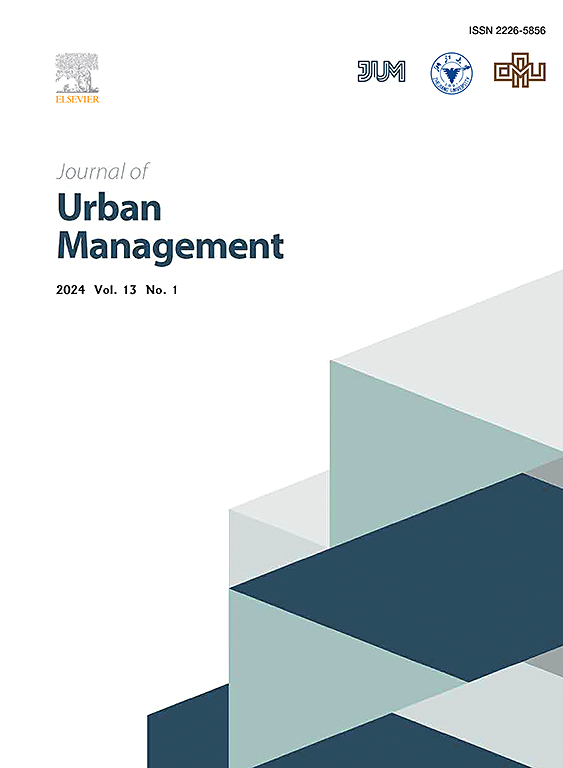Evaluating spatial coupling between employment, population density, and metro stations in Shenzhen: A network accessibility perspective
IF 5
2区 社会学
Q1 URBAN STUDIES
引用次数: 0
Abstract
Transit-Oriented Development (TOD) is increasingly recognized as an effective urban planning strategy, aiming for the harmonious development of urban spatial structures and rail transit systems, thus fostering sustainability. This study addresses the limitations of existing research in quantifying the relationship between rail transit and the spatial distribution of residential and employment populations. To bridge these gaps, this study develops an Accessibility of Metro Stations (AMS) index to examine how metro accessibility influences employment and population densities, offering recommendations for optimizing TOD strategies. Methodologically, the study employs social network analysis to develop the AMS index, measuring the connectivity of metro stations to surrounding areas. Cellular signaling data from Shenzhen provides spatial accuracy, supporting a spatial autocorrelation analysis of the coupling between AMS and both employment and population densities. Findings reveal a moderate correlation and a significant positive spatial correlation between AMS and these densities, with a more robust association observed in the resident population. Intriguingly, only 41% of metro stations exhibit a coupling relationship with the resident population, and 33% with the employed population. Based on these insights, a typology of coupling relationships is proposed, linking metro station accessibility to population and employment densities. This typology is instrumental in informing targeted urban management policies and guiding practical TOD implementations, fostering sustainable urban development and promoting long-term environmental, economic, and social resilience.
深圳就业、人口密度与地铁车站的空间耦合:网络可达性视角
公交导向发展(TOD)是一种有效的城市规划策略,旨在促进城市空间结构和轨道交通系统的协调发展,从而促进可持续发展。本研究解决了现有研究在量化轨道交通与居住和就业人口空间分布之间关系方面的局限性。为了弥补这些差距,本研究开发了地铁站可达性指数(AMS),以考察地铁可达性对就业和人口密度的影响,并为优化TOD策略提供建议。在方法上,该研究采用社会网络分析来开发AMS指数,衡量地铁站与周边地区的连通性。来自深圳的蜂窝信号数据提供了空间精度,支持AMS与就业和人口密度之间耦合的空间自相关分析。研究结果显示,AMS与这些密度之间存在中度相关性和显著的正空间相关性,在常住人口中观察到更强的相关性。有趣的是,只有41%的地铁站与常住人口存在耦合关系,33%的地铁站与就业人口存在耦合关系。基于这些见解,我们提出了一种耦合关系的类型,将地铁站的可达性与人口和就业密度联系起来。这种类型有助于为有针对性的城市管理政策提供信息,指导TOD的实际实施,促进可持续城市发展,促进长期的环境、经济和社会韧性。
本文章由计算机程序翻译,如有差异,请以英文原文为准。
求助全文
约1分钟内获得全文
求助全文
来源期刊

Journal of Urban Management
URBAN STUDIES-
CiteScore
9.50
自引率
4.90%
发文量
45
审稿时长
65 days
期刊介绍:
Journal of Urban Management (JUM) is the Official Journal of Zhejiang University and the Chinese Association of Urban Management, an international, peer-reviewed open access journal covering planning, administering, regulating, and governing urban complexity.
JUM has its two-fold aims set to integrate the studies across fields in urban planning and management, as well as to provide a more holistic perspective on problem solving.
1) Explore innovative management skills for taming thorny problems that arise with global urbanization
2) Provide a platform to deal with urban affairs whose solutions must be looked at from an interdisciplinary perspective.
 求助内容:
求助内容: 应助结果提醒方式:
应助结果提醒方式:


